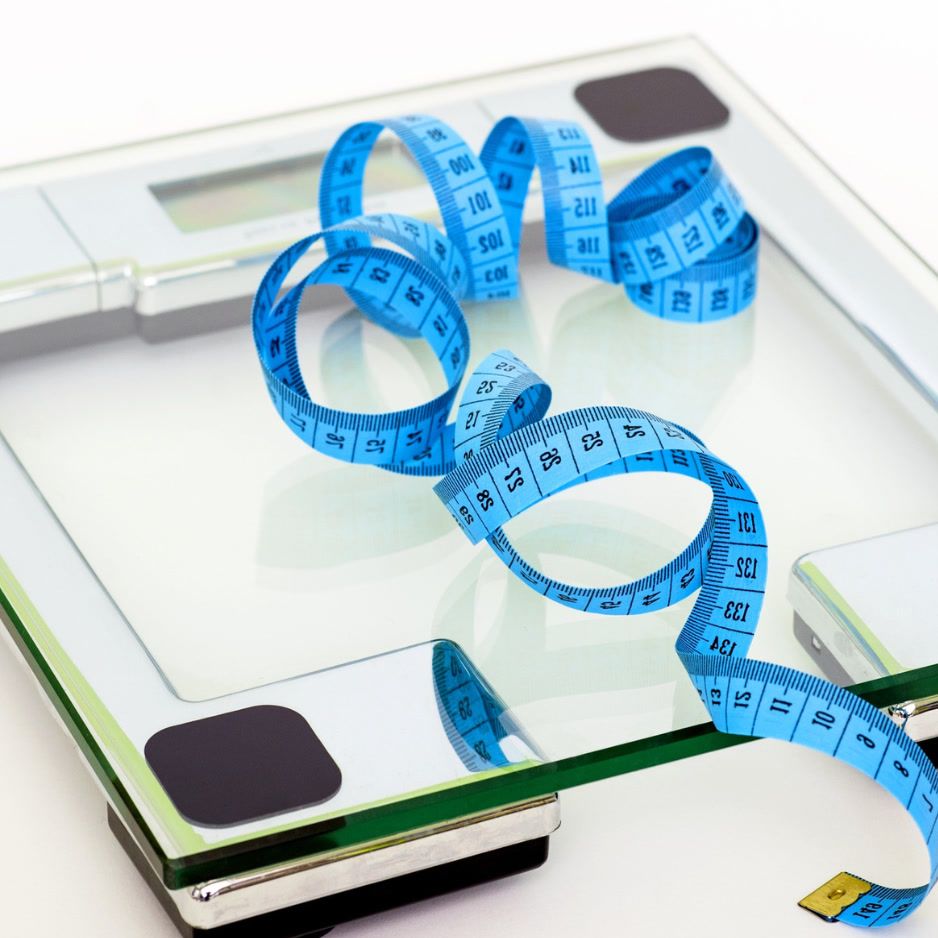How to Calculate Body Fat Percentage: A Guide
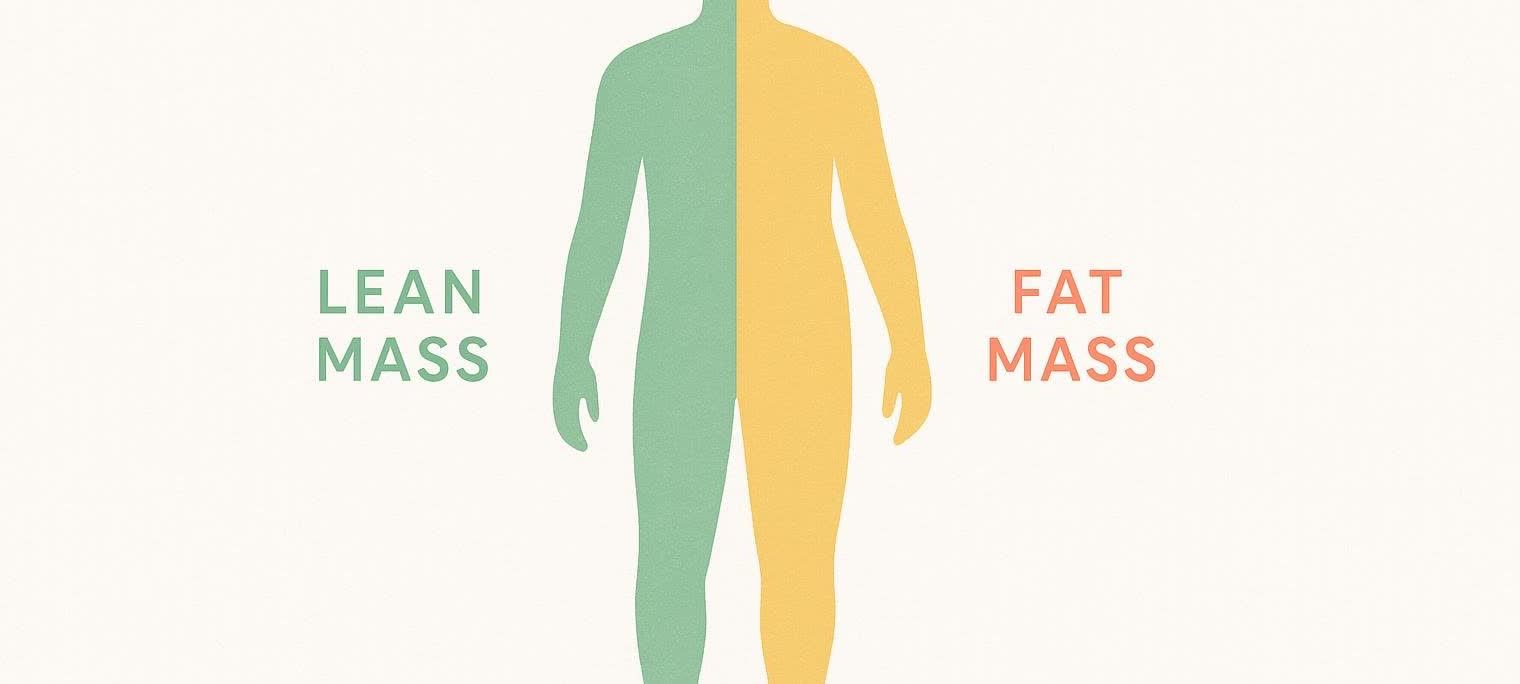
How to Calculate Body Fat Percentage: A Comprehensive Guide
Body fat percentage is the proportion of your total body weight that is fat mass, as opposed to lean mass (muscle, bones, organs, and water).
Because the bathroom scale can't distinguish muscle from fat, understanding—and accurately calculating—this ratio is invaluable for setting smarter training targets, tracking real progress, and spotting health risks early. This guide walks you through how to calculate your body fat percentage using both at-home techniques and clinical-grade technologies.
Quick take: If you want the most accurate picture of your body composition, book a DEXA scan. If you're after a practical estimate, the Navy or skinfold method can offer valuable insights when performed with careful execution.
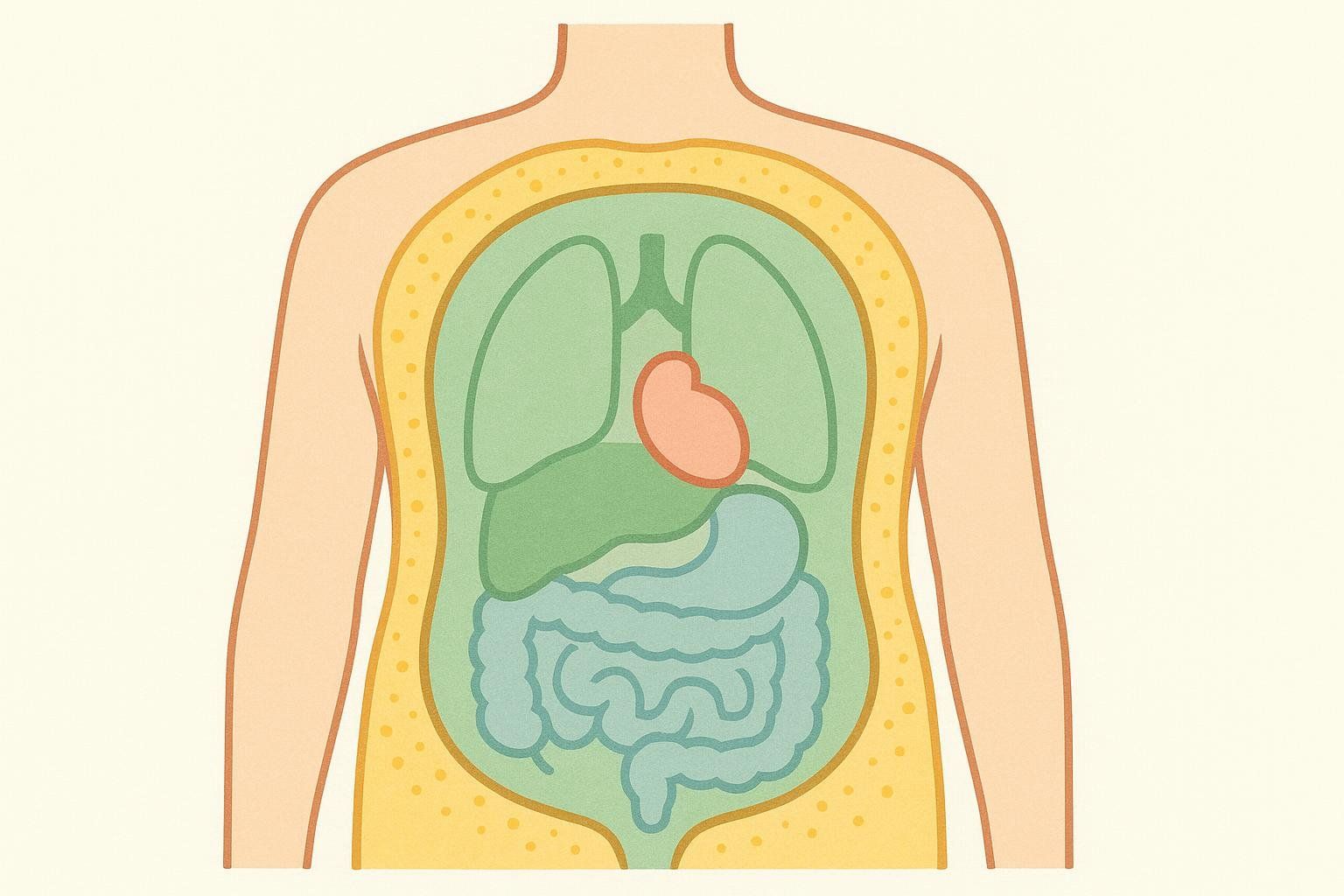
Quick Quiz: Which Body Fat Measurement Method Is Right for You?
Answer the questions below and note the letter for each choice. Tally which letter appears most often, then find your recommendation.
| # | Question | a | b | c | d |
|---|---|---|---|---|---|
| 1 | How important is pin-point accuracy? | Non-negotiable | Helpful | Nice but not critical | I just need a trend |
| 2 | What's your budget per measurement? | $40–$60 | $20–$40 | < $20 | Free |
| 3 | How much time & effort can you spare? | 15-min drive + 10-min scan | 10-min gym visit | 5-min bathroom check | < 2 min |
| 4 | Do you mind a small dose of X-ray radiation (~0.4 µSv—about the same as eating 4 bananas per US EPA)? | No problem | Prefer not | N/A | N/A |
| 5 | How often will you measure? | Every 2–3 months | Monthly | Every 2–4 weeks | Weekly or unsure |
Mostly A's → DEXA Scan (gold-standard accuracy, full-body report performed a few times per year).
Mostly B's → 3-D Optical Imaging Booth (fast, no radiation, good repeat option).
Mostly C's → Multi-frequency BIA (InBody® or similar gym device).
Mostly D's → Skinfold Calipers or Tape-Measure Formulas for home tracking.
Ready for gold-standard data? Book a DEXA scan at BodySpec.
Based on your quiz results, use this comprehensive guide to learn more about your recommended method and alternatives.
Table of Contents
- Why Body Fat Percentage Matters
- Healthy Body Fat Percentage Ranges
- Method Comparison: Accuracy, Cost & Convenience
- 4 Common Ways to Measure Your Body Fat Percentage at Home
- Clinical-Grade Methods for Measuring Body Fat Percentage
- How Often Should You Measure?
- FAQ & Myth-Busting
- Next Steps: Turning Numbers Into Action
Why Body Fat Percentage Matters
Understanding your body fat percentage is crucial for several health and fitness reasons:
- Body fat is metabolically active: adipose tissue releases hormones and inflammatory molecules that influence everything from appetite to immune function (Ahima & Flier, 2000).
- Excess body fat—especially visceral fat around your organs—raises the risk of type 2 diabetes, heart disease, and at least 13 cancers (National Cancer Institute, 2024).
- Very low body fat can disrupt hormones, immunity, and bone health—particularly in women, contributing to the Female Athlete Triad (energy deficiency, menstrual dysfunction, and low bone density) (Javed et al., 2013).
- Unlike BMI, body fat percentage distinguishes muscle from fat. Two people with identical BMIs can have dramatically different health profiles and metabolic risk factors. (See our deep dive: BMI vs Body Fat Percentage).
Body fat provides energy storage and insulation, but maintaining the right balance is essential for optimal health. Too much body fat can strain the heart and other organs, while too little can lead to weakened immune function and hormonal imbalances.
Healthy Body Fat Percentage Ranges
Below is an age- and sex-specific chart detailing healthy body fat percentage ranges. The category cut-offs come from the American Council on Exercise (ACE), while the age stratification is adapted from NHANES 1999–2004 DXA data (Heo et al., 2012).
| Category | Men 20-39 | Men 40-59 | Men 60+ | Women 20-39 | Women 40-59 | Women 60+ |
|---|---|---|---|---|---|---|
| Essential Fat | 2–5% | 2–5% | 2–5% | 10–13% | 10–13% | 10–13% |
| Athletes | 6–13% | 6–13% | 6–15% | 14–20% | 14–23% | 14–23% |
| Fitness | 14–17% | 14–17% | 16–20% | 21–24% | 24–27% | 25–29% |
| Acceptable | 18–24% | 18–24% | 21–27% | 25–31% | 28–34% | 30–36% |
| Obese (clinical risk) | ≥25% | ≥25% | ≥28% | ≥32% | ≥35% | ≥37% |
Essential Fat represents the minimum lipid stores needed for hormone production, brain function, and organ cushioning. Dropping below these levels can impair immunity and testosterone/estrogen balance.
Athletes ranges are typical of competitive endurance and power athletes. DEXA studies show competitive athletes rarely fall below ~10% (men) and 16% (women) body fat (J Clin Densitom).
Fitness levels show lean appearance with visible muscle definition and are associated with improved insulin sensitivity and lower cardiometabolic risk.
Acceptable/Average falls within NIH "normal" BMI range for many, though health risks begin to rise gradually—especially if visceral fat is high.
Obese (clinically) correlates with elevated visceral adipose tissue and increased incidence of type 2 diabetes, hypertension, and cardiovascular disease (J Clin Endocrinol Metab).
For a deeper dive—including ethnic-specific cut-offs—see our body fat percentage chart guide.
Method Comparison: Accuracy, Cost & Convenience
| Method | Typical Error (% body fat) | Cost | Time | Best For | Key Source |
|---|---|---|---|---|---|
| DEXA Scan | ±1–2 % | Moderate ($40-60) | ≈10 min | Clinical-grade accuracy seekers | J Appl Physiol |
| 3-D Optical Imaging | ±3–4 % | Moderate ($20-40) | ≈5 min | Frequent trackers needing speed | Am J Clin Nutr |
| Multi-frequency BIA | ±3–5 % | Low–Moderate (<$20) | ≈5 min | Gym-goers seeking quick trends | PLoS One |
| Skinfold Calipers | ±3–6 % | Low ($10-40) | ≈5 min | Coaches & DIY enthusiasts | Int J Body Comp Res |
| Tape-Measure Equations | ±4–8 % | Free | ≈2 min | Budget-friendly self-trackers | Med Sci Sports Exerc |
| Home BIA Scale | ±5–8 % | Low (after purchase) | ≈30 sec | At-home check-ins (accept higher error) | Front Nutr |
Error ranges assume proper prep; dehydration or technique mistakes can double them.
DEXA is considered the gold standard because it's the only method that measures every square inch of your body rather than using samples or formulas. It also provides measurements of specific body areas, muscle mass, bone density, and visceral fat—data that other methods cannot match.
4 Common Ways to Measure Your Body Fat Percentage at Home
1. U.S. Navy Tape Method (Circumference-Based)
Use a flexible, non-stretch tape and follow these steps:
Measurements for Men
- Neck – just below the larynx.
- Waist – at the navel level.
- Height – standing tall, barefoot.
Measurements for Women
- Neck – just below the larynx.
- Natural waist – narrowest point of the torso.
- Hip – widest point around the buttocks.
- Height – standing tall, barefoot.
Critical: Follow Official Rounding Rules
Hodgdon & Beckett's 1984 Navy formulas rely on specific rounding rules. Skipping these rules can significantly shift your result:
- Neck: round up to the nearest 0.5 inch.
- Waist (men) or natural waist (women) and hip (women): round down to the nearest 0.5 inch.
- Height: round to the nearest 0.5 inch.
(Source: Hodgdon & Beckett, 1984 – Naval Health Research Center Report 84-11)
Formulas (inch version)
Men: BF% = 86.010 × log₁₀(waist − neck) − 70.041 × log₁₀(height) + 36.76
Women: BF% = 163.205 × log₁₀(natural waist + hip − neck) − 97.684 × log₁₀(height) − 78.387
Tip: These logarithmic formulas are easiest to run through an online Navy Method calculator rather than performing the calculations manually.
Accuracy: Among 609 active-duty Marines, the tape method was within ±4 %BF of DEXA when executed correctly (Tometich et al., 2022).
2. Skinfold Calipers
Pinch subcutaneous fat at standard sites, record millimeters, then plug the sums into validated equations.
Technique:
- Pinch a vertical skinfold at the measurement site
- Place caliper jaws 1 cm below fingers; release pressure
- Wait 1 second, read millimeters
- Repeat at standard sites, then average two readings per site
Common Jackson–Pollock 3-site locations:
| Sex | Sites (right side) |
|---|---|
| Men | Chest · Abdomen · Thigh |
| Women | Triceps · Suprailiac · Thigh |
7-Site Protocol: Chest, Mid-Axillary, Triceps, Subscapular, Abdomen, Suprailiac, Thigh
Pro Tip: Have a partner photograph caliper placement the first time. Re-use as reference to improve consistency.
Enter totals into a skinfold body fat percentage calculator or see our walkthrough: How to Measure Body Fat: A Step-by-Step Guide.
Accuracy: Studies comparing skinfolds to DEXA usually find they differ by about 2–4 %BF. The standard error of estimate (SEE) averages around 2.7 %BF (Munguia-Izquierdo et al., 2022).
3. BIA Scale (Bioelectrical Impedance Analysis)
Stand barefoot on metal electrodes; a tiny, harmless current measures impedance to estimate body fat.
Step-by-Step:
- Place scale on hard, level surface
- Step on barefoot after waking and using restroom—before food or fluids
- Keep still until measurement finalizes (≈30 seconds)
- Track trends; expect day-to-day swings if hydration varies
Consistency tips:
- Measure first thing in the morning
- Keep feet and electrodes dry
- Watch weekly trends, not daily blips
- Avoid exercise, caffeine, or alcohol for 8-12 hours before testing
Accuracy: Multi-frequency BIA devices typically show ±4–7 %BF error versus DEXA, with hydration status the biggest swing factor (Ackland et al., 2012).
4. BMI-Based Estimation Formula (Deurenberg)
BMI alone can't separate muscle from fat, but adding age and sex refines the estimate:
BF% = (1.20 × BMI) + (0.23 × age) − (10.8 × sex) − 5.4
(sex = 1 for males, 0 for females)
Limitations: This equation carries a standard error of ≈4 %BF, which can translate to individual errors of roughly ±8 %BF versus DEXA. It's most useful for population-level screening rather than individual assessment (Deurenberg et al., 1991).
Clinical-Grade Methods for Measuring Body Fat Percentage
DEXA Scan – The Gold Standard
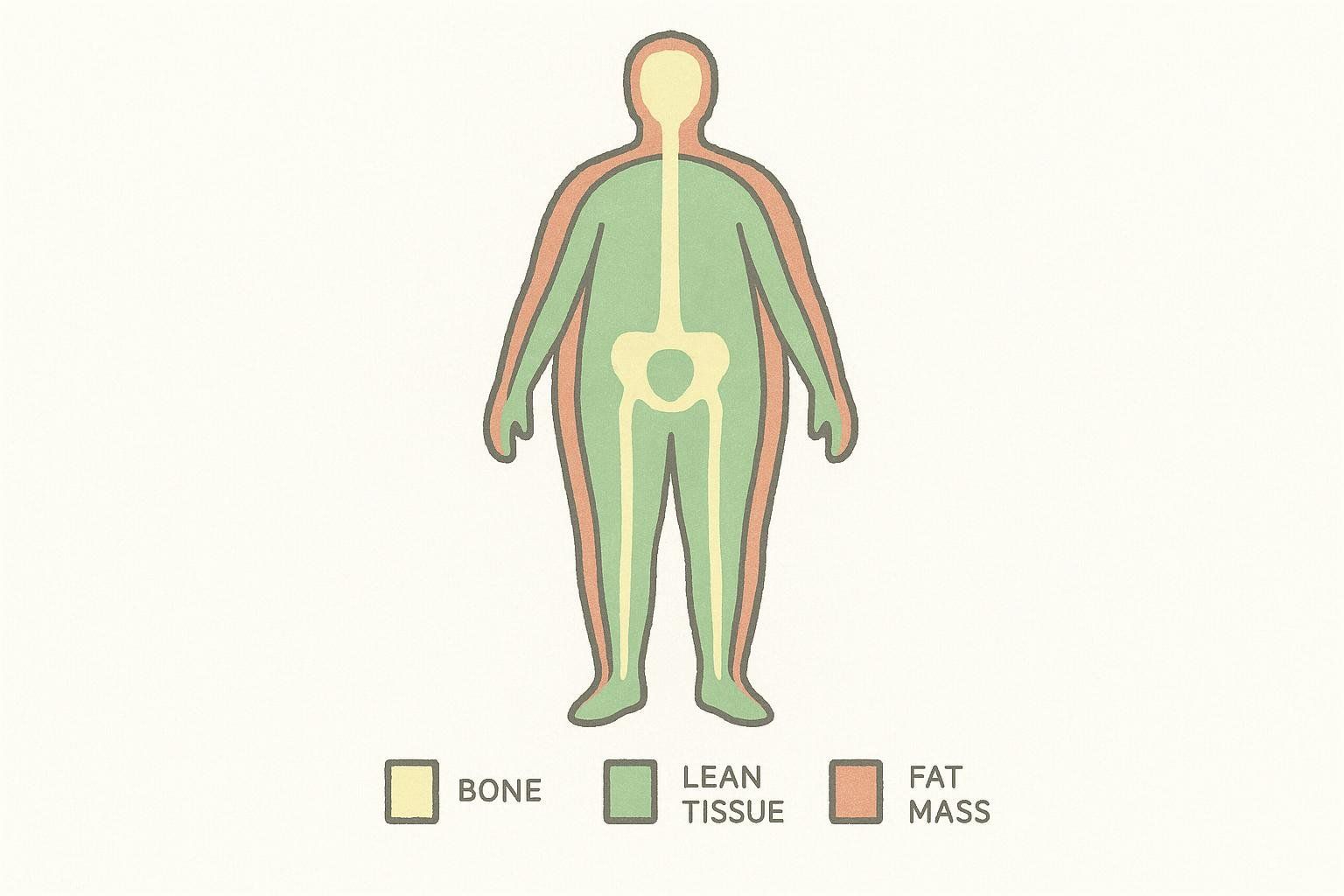
What You Do:
- Book online. For best consistency, avoid eating or drinking anything besides water for 2–3 hours before your scan
- Wear thin, metal-free clothing (e.g., leggings, compression shirt)
- Lie still while the scanner arm passes for ~10 minutes
- View a color-coded map of fat, lean, bone, and visceral fat—plus trend analysis in the BodySpec app
Pros:
- Highest accuracy, precision and repeatability (±1–2 %BF)
- Only method that measures every square inch of your body
- Provides measurements of specific body areas, muscle mass, bone density
- Easy test process with immediate results, done fully clothed
- Only method that directly measures visceral fat
Cons:
- Moderate cost ($40-60 per scan)
- Limited availability (though BodySpec is expanding access)
- Small radiation exposure (equivalent to eating 4 bananas)
- Weight restrictions on some scanners
A modern DEXA scan uses low-dose X-rays to map fat mass, lean mass, and bone density with exceptional precision. You also receive visceral-fat data and detailed regional breakdowns.
Want to prep like a pro? Check our 5 Tips for a Successful BodySpec Scan.
Air-Displacement Plethysmography (Bod Pod)
What You Do:
- Wear form-fitting, light-colored clothing or bathing suit
- Sit inside Bod Pod for 5-8 minutes
- Machine measures air displacement to calculate body density
- Results calculated using established formulas
Pros:
- Good for children, elderly, and disabled individuals
- Quick and easy process
- No radiation exposure
Cons:
- Requires specialized clothing (spandex, swim cap)
- Formula-based calculations prone to error
- Limited availability
- Often tests lower than other methods
Accuracy: ±3–4 %BF versus DEXA (Fields & Goran, 2000).
3-D Optical Scanning
What You Do:
- Wear form-fitting, light-colored clothing
- Step onto turntable and hold prescribed pose
- Platform rotates 360° while cameras capture body shape (≈40 seconds)
- Retrieve results via email or app
Pros:
- Fast and convenient
- No radiation exposure
- Good for frequent tracking
- Provides body measurements and visualization
Cons:
- Accuracy affected by clothing fit and lighting
- Limited availability
- More expensive than home methods
Accuracy: ±4–5 %BF versus DEXA (Am J Clin Nutr).
Hydrostatic Weighing
What You Do:
- Weigh yourself on dry land
- Submerge completely in water tank while expelling all air from lungs
- Underwater weight measured (usually 3 times and averaged)
- Results calculated using body density formulas
Pros:
- Historically considered highly accurate
- Well-established methodology
Cons:
- Requires complete underwater submersion
- Prone to technical error (air retention, anxiety)
- Formula assumes standard bone density
- Generally uncomfortable
- Largely obsolete (replaced by DEXA)
Accuracy: Can be highly accurate when performed correctly, but technical challenges often reduce real-world precision.
How Often Should You Measure?
The frequency of body fat measurement depends on your method and goals:
• DEXA / 3-D Optical: Every 8–12 weeks—enough time for meaningful changes. Most people benefit from testing every 2–3 months to capture significant fat-mass changes while keeping radiation exposure minimal. Athletes in active training cycles can scan monthly to fine-tune nutrition and recovery.
• Gym-based BIA: Monthly for trend tracking.
• Tape / Calipers / Home BIA: Bi-weekly; average two readings to smooth out measurement noise.
Key principle: Match your measurement frequency to the rate of change you expect. Rapid changes (cutting for competition) may warrant more frequent monitoring, while gradual lifestyle changes can be tracked less often.
FAQ & Myth-Busting
How accurate is the Navy tape-measure method?
Within ±4–8 percentage points for most people when done carefully, following the official rounding rules (Med Sci Sports Exerc). Hydration shifts and waist-measurement errors account for most variance.
Does muscle soreness affect BIA or DEXA results?
BIA—yes, inflammation changes water balance and can affect readings. DEXA—minimal impact; accuracy holds even with muscle soreness.
How long should I wait between DEXA scans?
Most people benefit from testing every 2–3 months to capture meaningful fat-mass changes while keeping radiation exposure very low (≈ 4 bananas per scan). Athletes in active training cycles can scan as often as every month to fine-tune nutrition and recovery. BodySpec offers membership packages that reduce per-scan cost for frequent testers.
Can I use BMI instead of body fat percentage?
BMI misses the critical difference between muscle and fat. Two people with identical BMIs can have dramatically different body compositions and health risks. A muscular athlete may have a "high" BMI but low body fat, while someone with little muscle may have a "normal" BMI but high body fat percentage. Check Why BMI Calculators Aren't Useful for details.
What is a healthy visceral fat level?
A DEXA-derived visceral fat mass under 500 g (approx. VAT Index < 1.0) is generally considered low-risk. DEXA is the only widely accessible method that directly measures visceral fat (What Is a Healthy Visceral Fat Level).
How do 3-D optical scanners compare to DEXA?
They offer speed and no radiation but are typically ±3–4 %BF off DEXA values due to clothing fit and lighting variables (Am J Clin Nutr).
Does muscle turn into fat when I stop training?
Myth. Muscle fibers shrink (atrophy) while fat cells may enlarge, but one tissue doesn't morph into the other. They are completely different cell types with different functions.
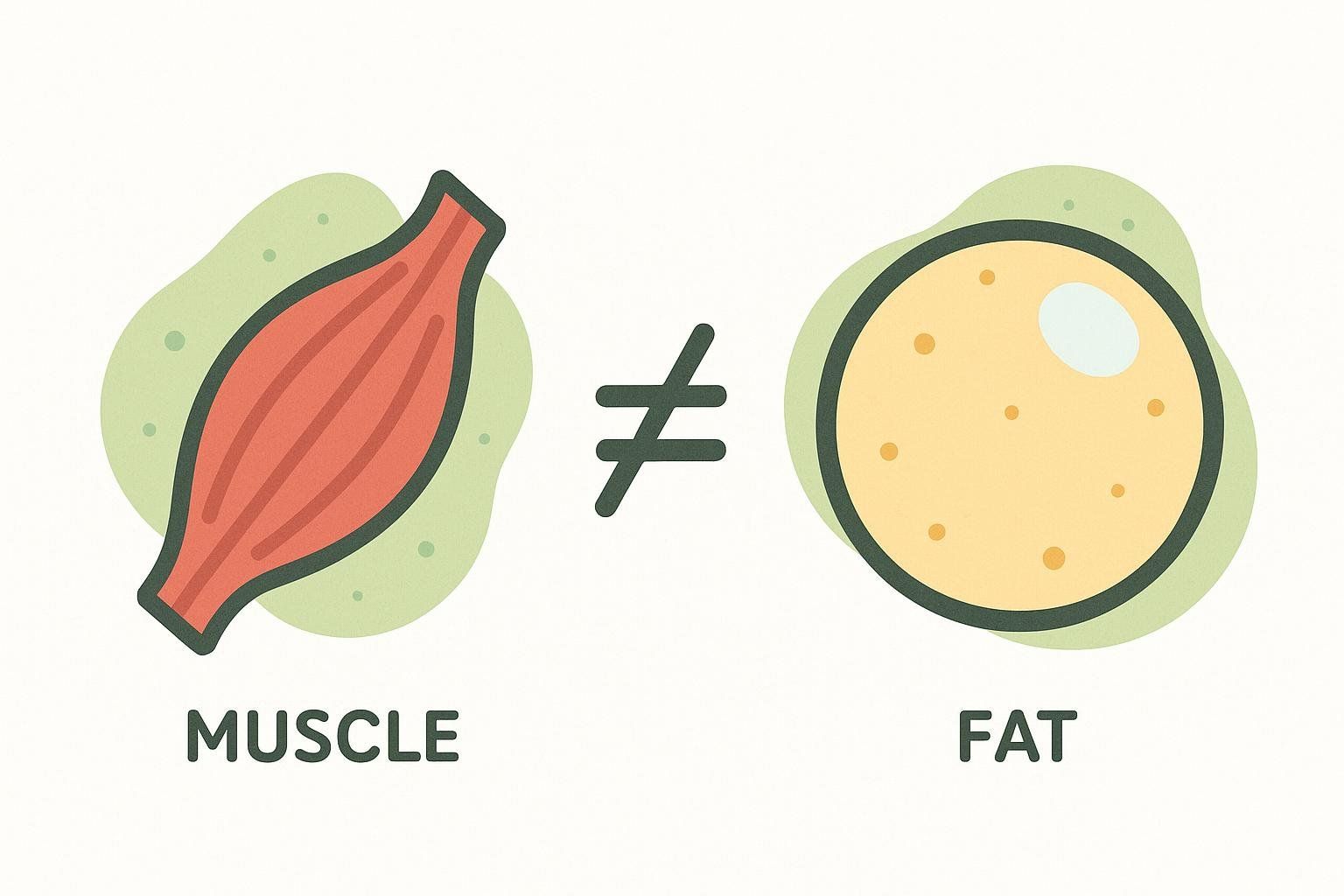
Can hydration skew my BIA scale?
Yes—dehydration can raise your reading, while overhydration can lower it by 2–3 %BF. This is why consistency in measurement timing and hydration status is crucial for BIA methods.
Why do different methods give me different results?
Each method has inherent limitations and measures body composition differently. DEXA directly measures tissue density, while BIA estimates based on electrical resistance, and calipers sample only subcutaneous fat. Expect 3-5% variance between methods even when performed correctly.
Is body fat percentage more important than weight?
Generally yes. Two people weighing the same can have vastly different health profiles based on their muscle-to-fat ratio. Body fat percentage provides insight into metabolic health, disease risk, and fitness level that weight alone cannot.
For more myths, read What Does Body Fat Percentage Really Mean?
Next Steps: Turning Numbers Into Action
- Get a baseline measurement using your chosen method—preferably DEXA for accuracy.
- Set realistic goals: Aim for 0.5–1.0 % body fat loss per month to preserve lean tissue (ACE, 2009).
- Combine strength training with 1.6–2.2 g/kg/day protein to maintain muscle during fat loss (ISSN, 2017).
- Track consistently using the same method, timing, and conditions.
- Monitor lifestyle factors—sleep, stress, hydration—that influence body composition.
- Reassess regularly based on your measurement schedule and adjust strategies as needed.
For gender-specific strategies read: A Guide to Body Fat Percentage in Women or A Guide to Body Fat Percentage in Men.
Bottom Line
Accurately measuring—and re-measuring—your body fat percentage is the foundation of smart training, effective fat loss, and health-risk management. For the most precise data—plus insight into visceral fat, lean mass, and bone density—book a BodySpec DEXA scan today. Your future self (and training log) will thank you.
Ready to see your true numbers? Schedule a BodySpec DEXA scan today.
Disclaimer: BodySpec provides body-composition information for wellness purposes and does not diagnose or treat medical conditions.


